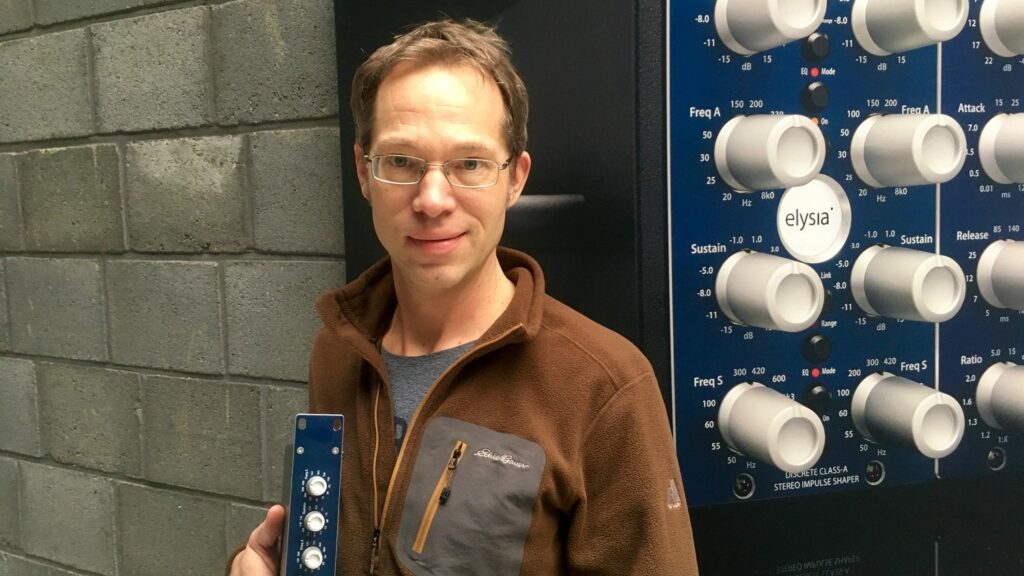
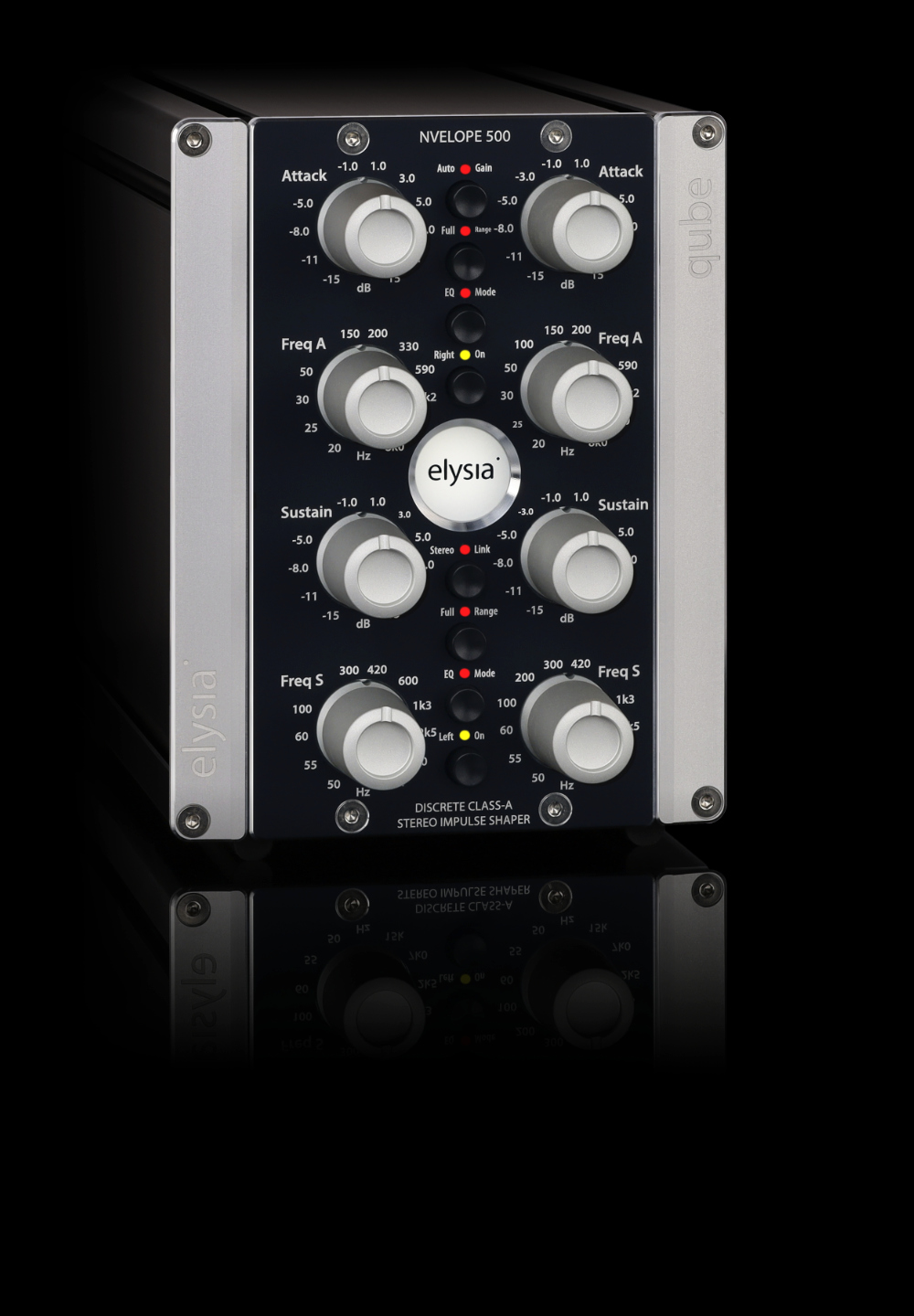

By loading the video, you agree to YouTube's privacy policy.
Learn more

By loading the video, you agree to YouTube's privacy policy.
Learn more

By loading the video, you agree to YouTube's privacy policy.
Learn more

By loading the video, you agree to YouTube's privacy policy.
Learn more

By loading the video, you agree to YouTube's privacy policy.
Learn more

By loading the video, you agree to YouTube's privacy policy.
Learn more
nvelope can shape your sound the way you’ve always wanted!
Choose between different examples including applications like recording, mixing or even mastering, use good headphones or speakers. Just press Play and A/B between the bypassed and active sounds!
Note: All audio is being processed by the analog hardware device.
Featured artists in these examples: Schutzschall
Note: If you have technical difficulties and don't hear audio playing back, you may want to switch off silent mode on your mobile device.
nvelope operates independently of the specific level of a signal, and you do not have to spend a lot of time trying to balance a set of complex controls to quickly get the results you seek.
Full Range mode is especially fast and easy to use, as all you need to do is dial in more or less attack and sustain by turning their specific controllers to the left (reduction) or to the right (increase).
Similar to a compressor and unlike in Dual Band mode, you can use the Freq A controller to reduce the influence of low frequencies on the attack processing (higher frequency = less bass influence).
The attack and sustain parameters become much more flexible by selectively processing a certain frequency range chosen by the user.
The Freq A controller now sets the start frequency for attack processing, while the Freq S controller determines the end frequency for sustain processing. The function of the Attack and Sustain controllers remains the same as in Full Range mode.
So it is pretty likely you’ll find yourself using the Dual Band mode in any situation where you would like to adapt the way the nvelope processes more individually and on material which tends to produce unwanted artifacts in Full Range mode.
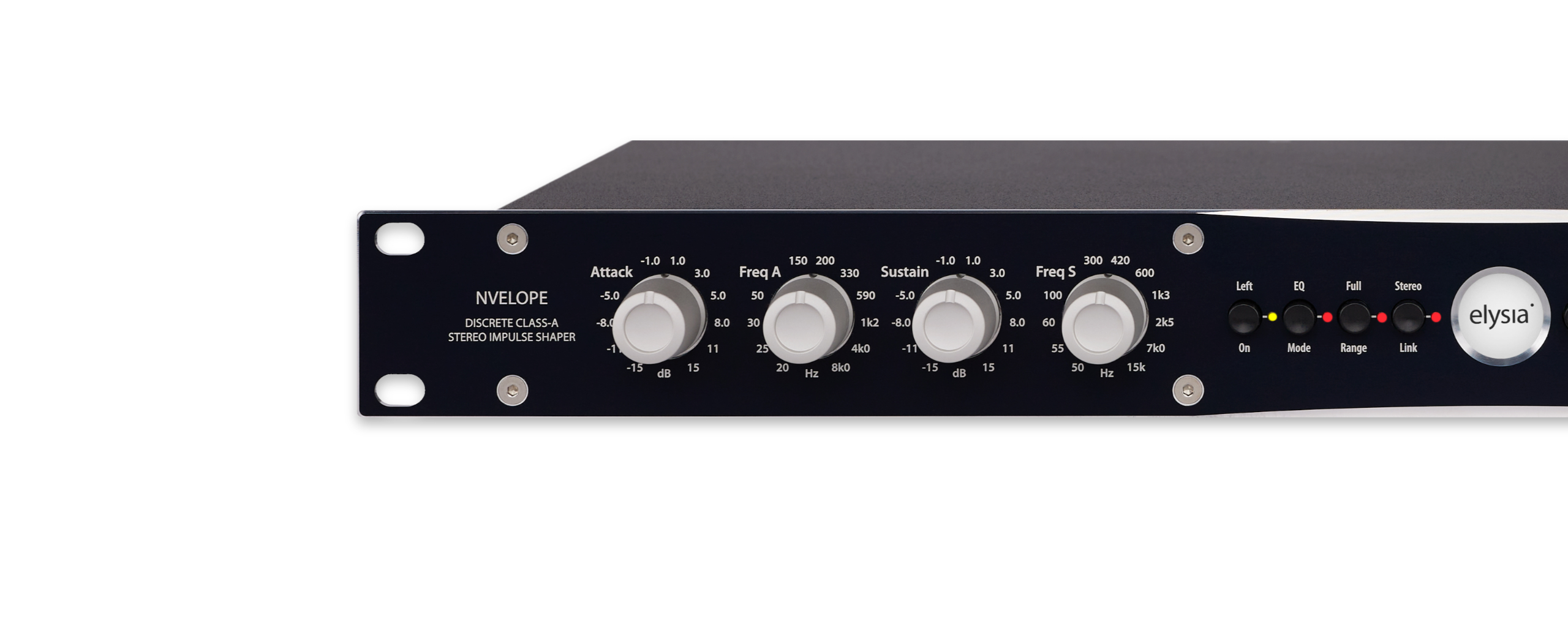
A very nice side effect of the topology of nvelope is that it can also be used as a shelving filter. This is achieved by temporarily deactivating its dynamics sections while keeping the filter stages active.
Freq A now sets the frequency of the high shelf filter, while Attack determines the amount of cut (turn left) or boost (turn right) in this band. Similarly, Freq S sets the frequency of the low shelf filter and Sustain determines the amount of cut or boost.
The two channels be used as two separate equalizers at the same time, or be linked together for processing stereo material as well.
nvelope has two channels of Full Range or Dual Band impulse shaper or shelving EQ, which can be operated stereo linked or dual mono.
But, the two separate channels can also be used for different tasks at the same time. For example, you can shape one signal in Dual Band mode in channel L and a completely different signal in Full Range mode in channel R.
Or, you can connect the output of channel L to the input of channel R, and then process the frequency response of one single signal with the EQ first, followed by some nice Dual Band impulse shaping.
There are lots of possible combinations.
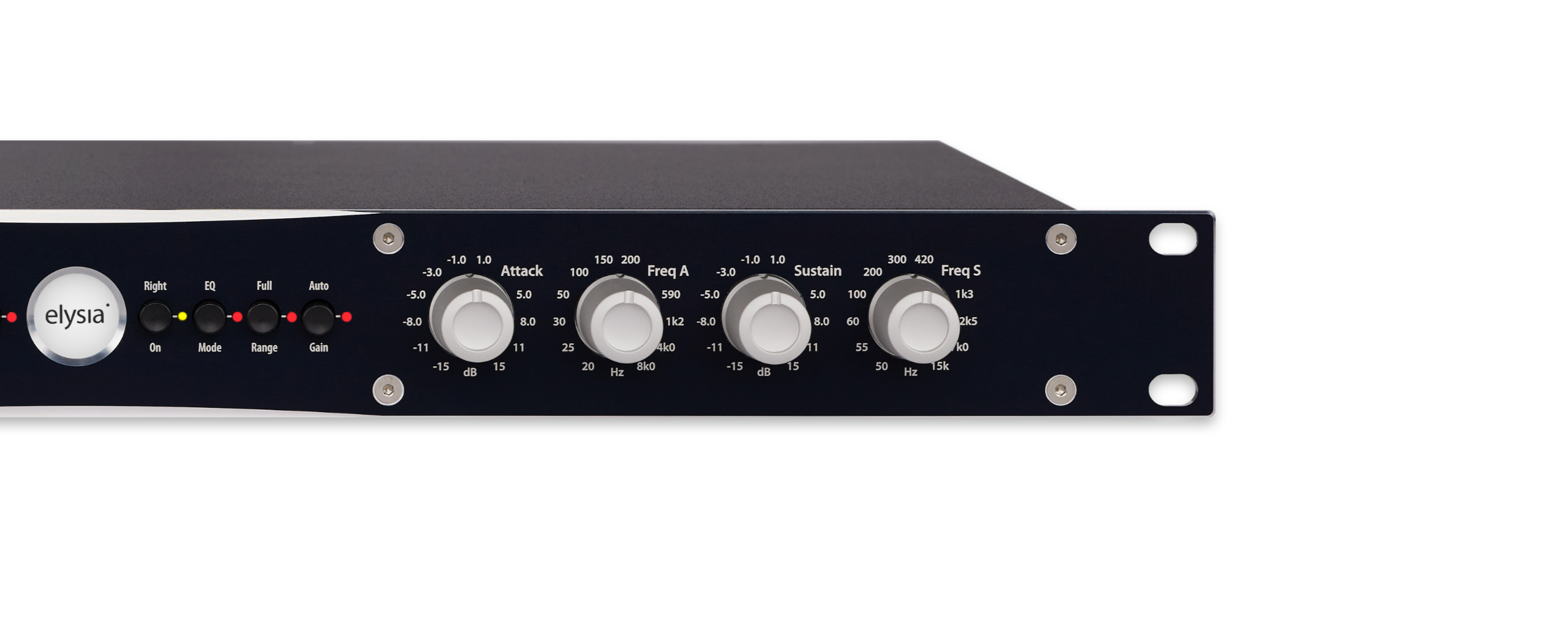
Boosting the attack in Full Range mode can sometimes result in some pretty huge level peaks. These can make your processed signal sound uneven, and in the worst case they will create the nasty kind of distortion you don’t want.
nvelope solves this with the Auto Gain function. This simple button makes the impulse shaper automatically compensate stronger level peaks, so this can be the solution for many level-related issues caused by the attack processing.
Auto Gain is typically not needed in Dual Band or EQ operation and therefore not offered in this mode.
The header says it all, but you might want to have a look at the possible channel combinations resulting from this. Ultimate flexibility!
Stereo Link:
2 x Full Range, 2 x Dual Band, 2 x EQ
Dual Mono:
Full Range – Full Range, Full Range – Dual Band, Full Range – EQ
Dual Band – Full Range, Dual Band – Dual Band, Dual Band – EQ, EQ – Full Range, EQ – Dual Band, EQ – EQ
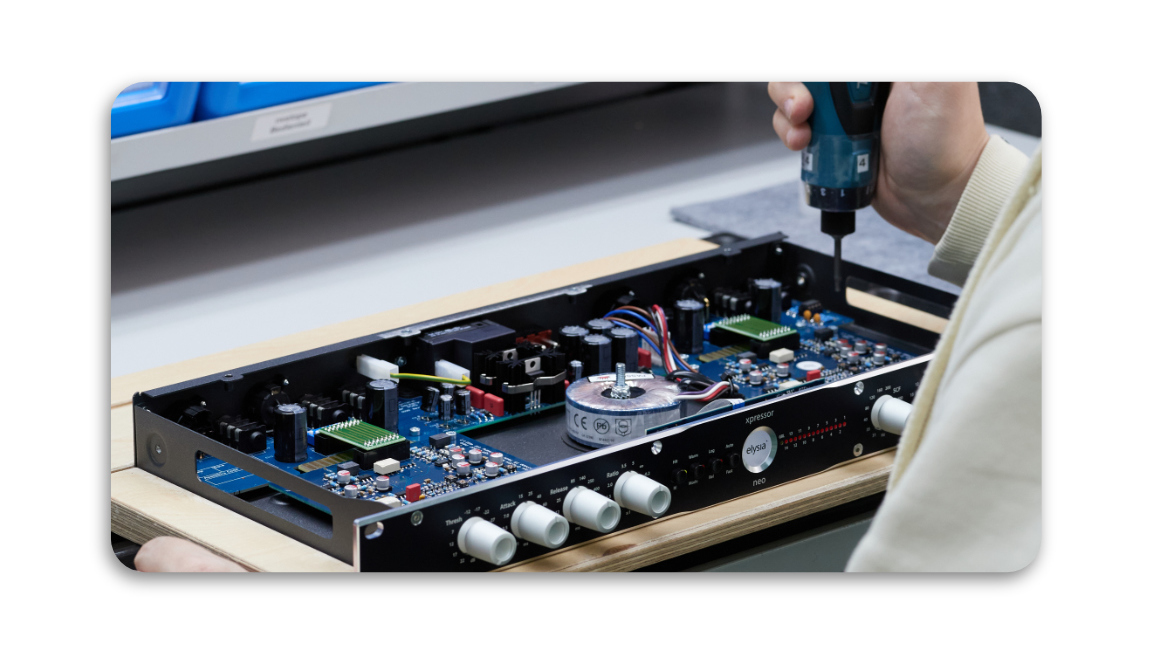
The nvelope is a powerful tool for editing individual tracks during mixing, nvelope|Mastering Edition is specifically designed to take your mastering process to the next level.
Achieve professional-grade results with precise parameters, seamlessly elevating your mixes, stand out in the industry, and immerse yourself in a streamlined workflow. Use it on percussive material or use the EQ function to make your mix shine.
Unleash your creativity and leave an indelible mark on your audience with the nvelope|Mastering Edition.
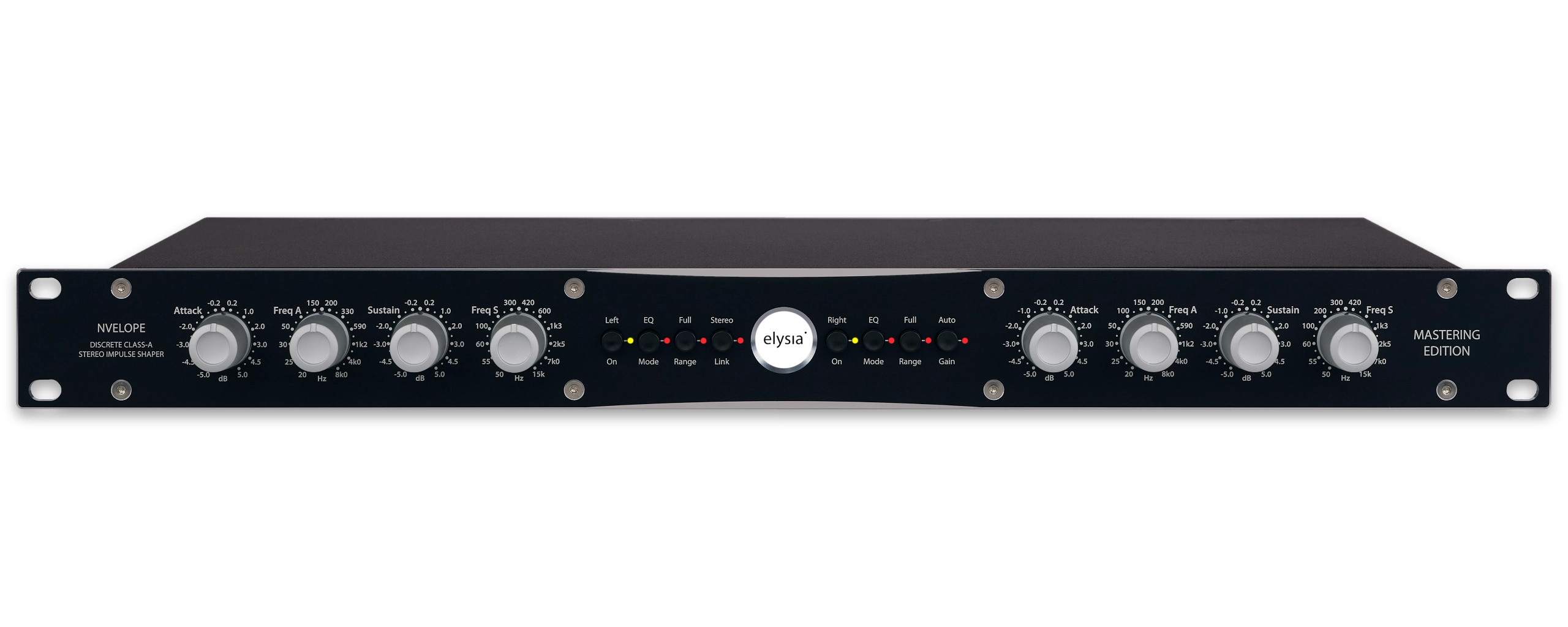
nvelope|Mastering Edition features precise control range of +/- 5dB with the gain parameters, allowing for accurate and repeatable adjustments of parameters. With various additional stepped potentiometers, and a very accurate detailed scale, it caters to demanding mastering needs. Its transparent processing preserves audio integrity, making it a go-to tool for precise and professional-grade mastering, empowering engineers and producers.
Stepped potentiometers provide professionals and enthusiasts with the ultimate solution for achieving precise control.
The improved interface provides tactile feedback for quick and accurate adjustments.
With their numerous advantages, these potentiometers are the go-to choice for those seeking accuracy and recall ability with nvelope|Mastering Edition

By loading the video, you agree to YouTube's privacy policy.
Learn more
The nvelope plugin comes with a few optimizations which were not possible on the hardware for technological reasons or space constraints, further improving the workflow on the DAW. The three different modes can be toggled with a single button instead of the two button matrix, and the lettering of the controllers changes accordingly.
Also, the plugin version features an additional gain trimmer which could not be placed on the panel of the original hardware, which is a welcome addition to the Auto Gain function.

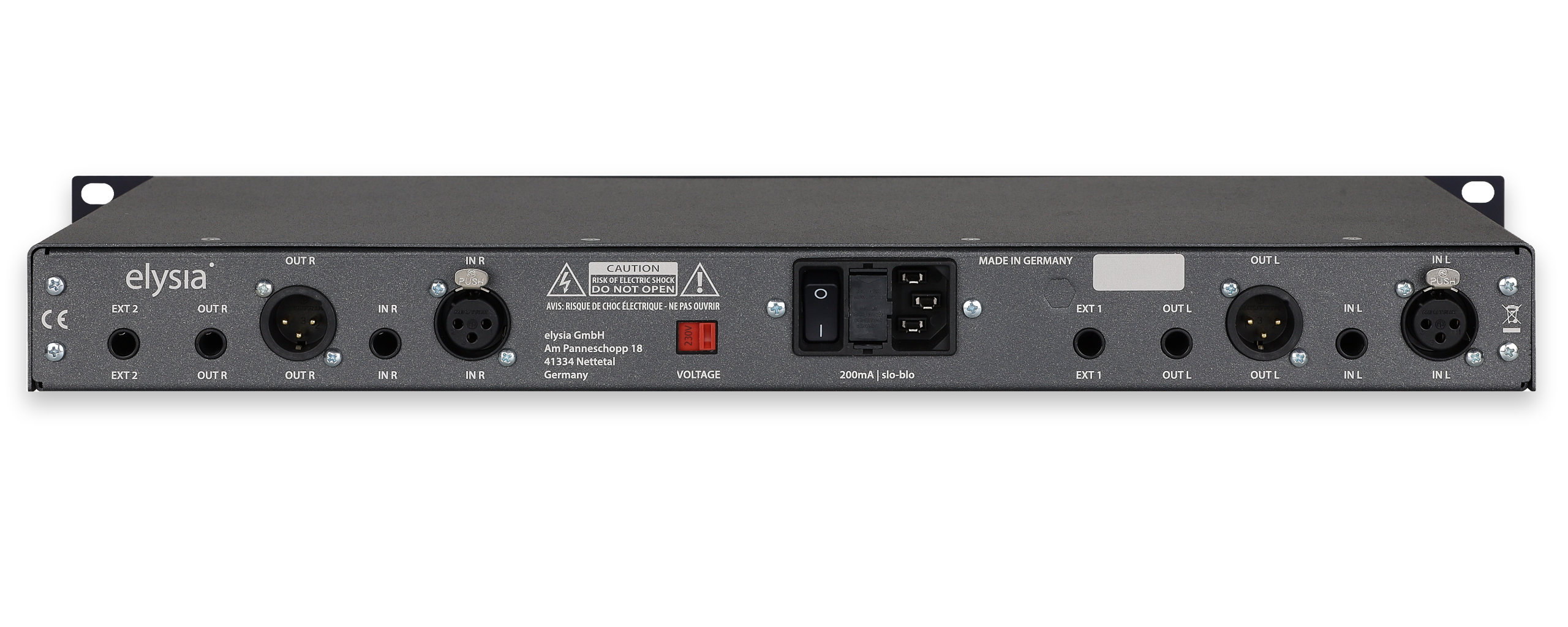
How do you get your favorite analog audio processors side by side of your laptop at home? What about your next tour or gig traveling the world?
We have unleashed our famous elysia analog audio processing hardware to make your musical life much easier, flexible and mobile with the elysia qube series.
A selected series of our famous 500-Analog Modules with Class-A Topology in a rugged, lightweight and travel-ready aluminium case with all the great pristine, transparent sound you will expect from us.
Analog to Go. Everywhere.
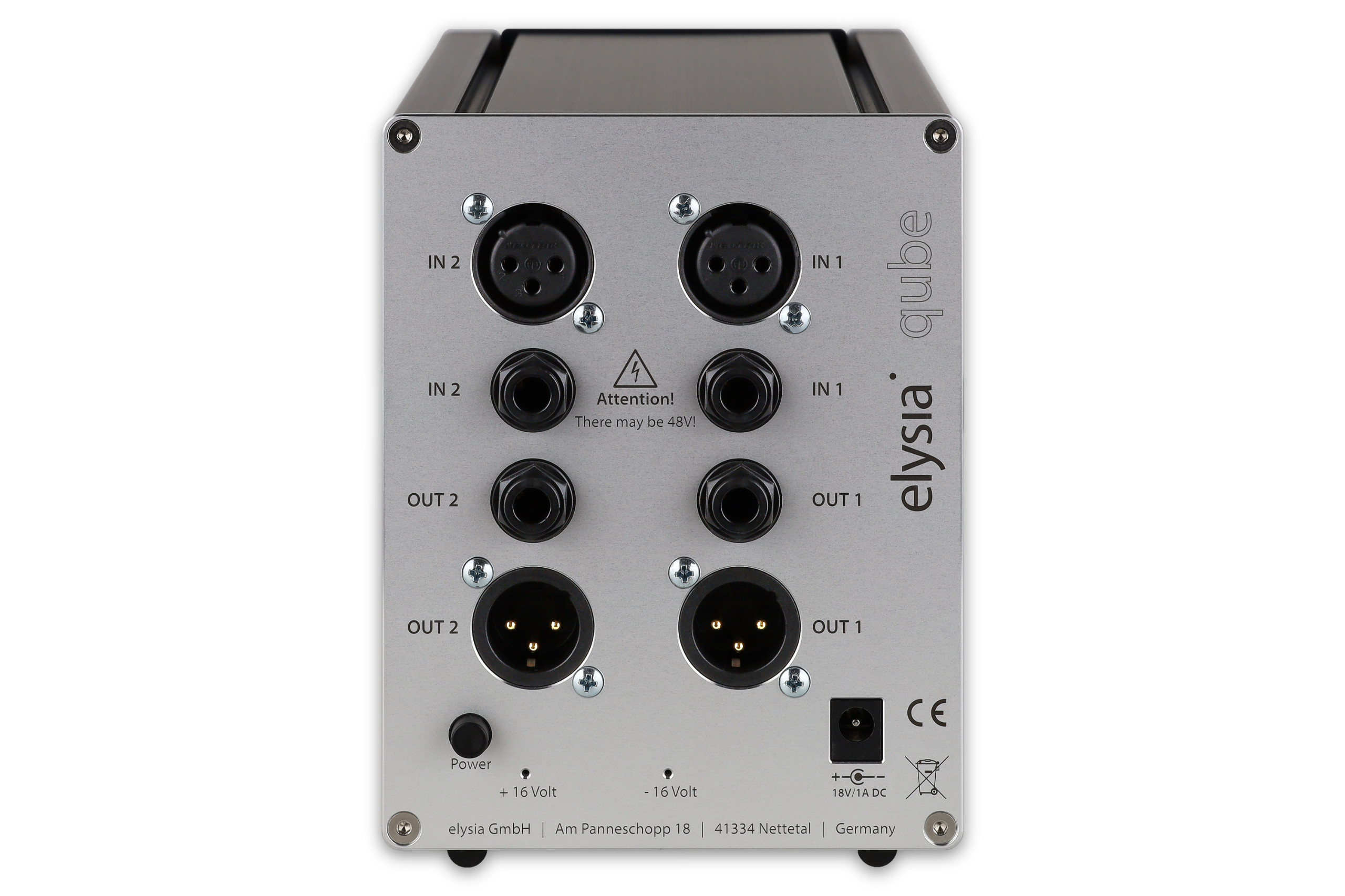
Frequency response:
<10 Hz – 400 kHz (-3,0 dB)
THD+N @ 0 dBu, 20 Hz – 22 kHz:
0,006 %
THD+N @ +10 dBu, 20 Hz – 22 kHz:
0,01 %
Noise floor, 20 Hz – 22 kHz (A-weighted):
Full Range & EQ Mode:
Dual Band Mode:
-90 dBu
-87 dBu
Dynamic range, 20 Hz – 22 kHz:
112 dB
Level:
Input:
Output:
+21 dBu
+21 dBu
Impedance:
Input:
Output:
10 kOhm
68 Ohm
Dimensions (W x H x D, incl. Knobs):
1 HE Rack:
elysia qube:
19” x 1,75“ x 9,4“
483 mm x 44,45 mm x 238 mm
4,1” x 5,39“ x 8,4“
104 mm x 137 mm x 212 mm
Weight:
1 HE Rack:
elysia qube:
3,88 lbs / 1,76 kg
3,17 lbs / 1,46 kg
Power consumption:
1 HE Rack:
elysia qube:
500 Series Module
Power consumption (nvelope|Mastering Edition):
1 HE Rack:
12 Watts
9 Watts
205 mA
12 Watts
Are you looking for a powerful audio processor that can enhance your music production? Look no further than the elysia nvelope! It is a versatile tool designed to shape and improve the dynamics of your audio signals, giving your tracks that professional touch they deserve.
With its intuitive controls and innovative features, the elysia nvelope offers unparalleled control over your sound. Whether you’re working on individual tracks, submixes, or even full mixes, this audio processor can work wonders. Its unique envelope shaper allows you to emphasize or attenuate specific parts of the audio signal, giving you precise control over the attack and sustain characteristics of your sounds.
The elysia nvelope is not only a powerful tool for mixing and mastering engineers but also a valuable asset for musicians and producers of all genres. Its transparent and musical sound quality ensures that your audio remains pristine and untouched, while still allowing you to shape and enhance it to your liking.
In terms of build quality, the elysia nvelope is built to last. It features a robust and stylish design, with high-quality components that ensure reliable performance for years to come. Whether you’re working in a professional studio or a home recording setup, the nvelope will withstand the demands of your workflow.
If you’re looking to take your audio productions to the next level, the elysia nvelope is a must-have tool. Its versatility, control, and outstanding sound quality make it a favorite among audio professionals worldwide. Experience the power of the elysia nvelope and unlock the true potential of your music today!
Copyright @ 2024 elysia GmbH. All rights reserved. Am Panneschopp 18 | 41334 Nettetal | business hours from monday until friday from 9:00 to 17:00h (CET)
We need your consent before you can continue on our website. If you are under 16 and wish to give consent to optional services, you must ask your legal guardians for permission. We use cookies and other technologies on our website. Some of them are essential, while others help us to improve this website and your experience. Personal data may be processed (e.g. IP addresses), for example for personalized ads and content or ad and content measurement. You can find more information about the use of your data in our privacy policy. You can revoke or adjust your selection at any time under Settings.
If you are under 16 and wish to give consent to optional services, you must ask your legal guardians for permission. We use cookies and other technologies on our website. Some of them are essential, while others help us to improve this website and your experience. Personal data may be processed (e.g. IP addresses), for example for personalized ads and content or ad and content measurement. You can find more information about the use of your data in our privacy policy. Here you will find an overview of all cookies used. You can give your consent to whole categories or display further information and select certain cookies.